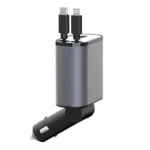In the ever-evolving landscape of global commerce, the efficiency and integrity of supply chains are pivotal elements that determine the success of businesses, big or small.
Supply chains, in their essence, are intricate networks comprising various tiers of suppliers and vendors, all collaborating to bring products and services from conception to the consumer.
One critical aspect of this web of interactions lies in the payment terms negotiated between businesses and their suppliers, notably the net 30 vendors. Such arrangements not only influence cash flow management but also the strategic relationships between different tiers within the supply chain.
This guide aims to demystify the complexities surrounding supply chain tiers and elucidate how net 30 vendors play a crucial role in enhancing operational efficiency for businesses of all sizes. Through a deeper understanding of these mechanisms, companies can forge more resilient, ethical, and competitive supply networks.
What Is the Multi-Tier Supply Chain?
Imagine your supply chain as a pyramid where each tier represents a stage in the journey of a product from raw material extraction to reaching the end consumer. At the base, we have Tier 3, comprising raw material suppliers who are the backbone of any product development process. Moving up, Tier 2 suppliers provide essential components or materials to Tier 1 suppliers, who are your direct vendors, forming the crux of your supply operations.
The Strategic Role of Net 30 Vendors
Net 30 payment terms, a common practice where the buyer has 30 days to pay the invoice from the delivery date, introduces a layer of financial flexibility within business transactions.
This setup can significantly affect power dynamics and the leverage businesses have over their supply chains. Large, financially robust companies might negotiate net 30 terms more readily with their Tier 1 suppliers, thus managing their own cash flows more effectively. Conversely, smaller suppliers might feel the pressure to extend such terms, despite potential strains on their liquidity.
However, wisely negotiated and managed net 30 terms can serve as a strategic tool for businesses, enhancing their competitiveness and even aiding in building a healthy business credit profile over time.
By diving into these concepts with clarity and strategic insight, businesses can optimize their operation efficiency and fortify their positions in the marketplace.
Unveiling the Supply Chain Tiers: A Hierarchical Network
 Image courtesy: Unsplash
Image courtesy: Unsplash
The concept of supply chain tiers is crucial for understanding how products journey from their origin to the consumer. Envisioning the supply chain as a multi-layered pyramid helps clarify the intricate network of suppliers and production processes involved.
Tier 0: The Foundation
Tier 0 is often implicit but serves as the foundation of the supply chain. This tier encompasses the sources of all raw materials, such as mines, oil fields, farms, and natural resources themselves. These foundational elements are critical building blocks for any product, initiating the journey from natural resource to consumer good.
Tier 1: Your Direct Suppliers
Tier 1 suppliers are those companies with which you have a direct contractual relationship. These suppliers provide essential components, finished subsystems, or services that integrate directly into your final product.
For instance, an automobile manufacturer might source fully assembled seats from a Tier 1 vendor, or a technology company might purchase microchips. This tier represents the first level of supplier engagement and is often the most visible to businesses.
Tier 2: Suppliers to Your Suppliers
The next tier involves suppliers to your direct suppliers (Tier 1). Tier 2 vendors support the manufacturing of your Tier 1 suppliers by providing specialized parts, sub-assemblies, or specific raw materials needed in production. An example includes a fabric mill that supplies cloth to a t-shirt factory, which in turn, sells the finished shirts to a clothing brand. Understanding your Tier 2 suppliers can be crucial for full visibility into the production of your goods.
Tier 3: The Raw Material Source
Tier 3 suppliers are at the beginning of the supply chain, focused on the extraction and initial processing of raw materials. These suppliers, such as cotton farms for textiles or lumber mills for wood products, are essential for ensuring the availability of basic materials. This tier underpins all subsequent manufacturing and production activities, making it a critical component of the supply chain.
Why Understanding Tiers Matters
A deep understanding of your supply chain tiers is not just beneficial; it’s essential for several key aspects of business success.
Enhanced Risk Management
Recognizing each tier of your supply chain allows for comprehensive risk assessments. Knowing the origins of your materials and components enables proactive identification of potential disruptions, be it due to natural disasters, geopolitical tensions, or supply shortages. This visibility is paramount for creating effective contingency plans.
Sustainable Practices
Mapping out your supply chain tiers provides the transparency needed to ensure sustainable practices are observed at every stage. This knowledge empowers businesses to partner with their suppliers across various tiers to adopt more environmentally friendly and socially responsible manufacturing methods, ultimately aligning the supply chain with the company’s ethical values.
Boosted Resilience
A detailed understanding of the supply chain enhances operational resilience. By identifying alternative suppliers across tiers or investing in inventory buffers, businesses can better withstand disruptions and maintain steady supply flows. This agility is critical in today’s fast-paced and unpredictable market environment.
Improved Decision-Making
Finally, knowledge of supply chain tiers leads to smarter, more strategic decision-making. For example, understanding the cost structures and pricing strategies of your Tier 2 and Tier 3 suppliers can offer leverage in negotiations with Tier 1 vendors. This thorough insight enables businesses to optimize costs, innovate products, and streamline operations for better overall competitiveness.
The Intricacy of Net 30 Vendors and Their Connection to Tiers
Power Dynamics and Leverage
The dynamic of power and leverage in supply chain tiers plays a significant role in dictating the terms, including payment conditions such as net 30, offered or demanded by businesses. Larger, financially stronger companies often have the upper hand, being able to dictate favorable terms to their suppliers.
This advantage allows these entities to assert considerable influence over their direct suppliers (Tier 1), securing flexible payment terms that facilitate better cash flow management.
Conversely, smaller enterprises, particularly those within Tier 2 or Tier 3, might find themselves pressured to accept these terms despite potential strain on their liquidity. This imbalance underlines the importance of fully understanding the financial implications of net 30 terms within the hierarchical supply chain.
The Downstream Squeeze
Tier 2 and Tier 3 suppliers often experience a phenomenon known as the “downstream squeeze”. This term refers to the pressure exerted by larger, more dominant entities upstream (such as Tier 1 suppliers and the end businesses) to extend net 30 payment terms. For smaller suppliers with limited cash reserves, this can pose considerable financial challenges, highlighting the critical nature of strategic financial planning.
Net 30 as a Strategic Tool
Despite the challenges, some suppliers adeptly utilize net 30 terms as a competitive edge, transforming it into a strategic tool. Offering net 30 can make a supplier more attractive to prospective clients, particularly startups and smaller businesses operating on tighter budgets.
By extending credit, these vendors position themselves as partners in their clients’ growth, enhancing their value proposition. This demonstrates the nuanced role net 30 terms play within supply chain tiers—not merely a monetary mechanism, but a strategic lever for growth and competitiveness.
Net 30 and Building Business Credit
Net 30 terms also offer an unmissable advantage in building and strengthening business credit. By facilitating purchase on credit, net 30 vendors often report payment histories to business credit bureaus, allowing companies to build a track record of timely payments.
This is invaluable for businesses at all tiers, as a solid business credit profile opens doors to a range of financing options, potentially under more favorable conditions. This aspect of net 30 terms not only impacts cash flow and operational financing but also underscores the strategic importance of such terms in long-term business growth and stability.
Strategic Sourcing and Supplier Relationship Management with The CEO Creative
Supply Chain Mapping
Supply chain mapping is a foundational step in understanding and optimizing the network of relationships that underpin a company’s operations. The CEO Creative leverages its expertise to create detailed visual representations of a business’s entire supply chain, identifying each tier, stakeholder, and the interdependencies between them. This clarity enables businesses to pinpoint inefficiencies, risks, and opportunities for cost-saving and improvement, making supply chain management a strategic asset rather than an operational necessity.
Strategic Sourcing
Strategic sourcing moves beyond mere price negotiation, incorporating a comprehensive analysis of purchasing activities to ensure alignment with broader business goals.
The CEO Creative assists companies in identifying optimal suppliers based on a balanced consideration of cost, quality, reliability, and sustainability.
By approaching sourcing as a strategic component of supply chain management, businesses can foster innovation, efficient resource allocation and ensure that their sourcing practices contribute positively to their competitive advantage.
Supplier Relationship Management
The quality of relationships with suppliers can significantly impact a company’s operational efficiency and market success. The CEO Creative emphasizes the importance of cultivating strong, transparent, and mutually beneficial relationships with all supply chain tiers.
Through effective communication, performance monitoring, and collaborative problem-solving, businesses can ensure a reliable, agile supply chain capable of adapting to changing business needs and market conditions.
The Importance of Ethical and Sustainable Sourcing in a Multi-Tiered Supply Chain
 Image courtesy: Unsplash
Image courtesy: Unsplash
The evolving dynamics of today’s market have created a pressing need for businesses to adopt ethical and sustainable sourcing practices within their supply chain management strategies.
Consumers and stakeholders increasingly hold companies accountable not only for their direct actions but also for the practices of their supply chain partners. Implementing responsible sourcing is no longer optional; it’s imperative for long-term success and risk management.
Addressing Social Responsibility
In a world acutely aware of human rights and labor conditions, addressing social responsibility within the supply chain has become critical. Supply chain mapping to the deepest tier possible affords businesses the transparency needed to identify and address serious issues such as child labor, exploitation, and unsafe work environments.
Taking steps to ensure that all tiers of the supply chain adhere to ethical labor practices not only aligns with moral imperatives but also protects the business from potential scandals and legal issues that could arise from association with unethical practices.
Driving Sustainability
The environmental impact of business operations is under scrutiny like never before. Sustainable sourcing ensures that resources are obtained in a way that conserves natural environments, minimizes energy consumption, and reduces waste and emissions.
Integrated sustainability strategies across all tiers of a supply chain can significantly lower the ecological footprint of products. From the extraction of raw materials to the delivery of the final product, every step presents an opportunity to choose more sustainable options, be it through recycling, opting for renewable energy sources, or implementing more efficient logistics strategies.
The Power of Collaboration
Achieving ethical and sustainable sourcing requires more than independent action; it necessitates collaboration across all levels of the supply chain.
Businesses must work closely with their suppliers to set mutual standards for ethical labor practices and environmental stewardship. This collaboration might involve the creation of shared goals, transparency requirements, and even joint investments in sustainability projects.
Through such partnerships, companies can drive significant improvements not just within their direct operations but throughout the supply chain.
Conclusion: Mastering Your Supply Chain for a Competitive Edge
In the intricate dance of global commerce, your supply chain is the spine of your business operations, influencing not just how efficiently you operate, but also how your brand is perceived in the marketplace.
As we have explored, understanding your supply chain tiers, working effectively with net 30 vendors, and committing to ethical and sustainable practices are not just operational imperatives—they are strategic necessities for businesses in the 21st century.
– Visibility is Power: Recognizing and managing the complexities of your supply chain across all tiers enhances your capability to foresee potential disruptions, uncover cost-saving opportunities, and bolster your strategic decision-making. A detailed supply chain map empowers you to mitigate risks proactively and ensure the smooth flow of operations.
– Net 30 as a Strategic Tool: The judicious application of Net 30 payment terms can provide much-needed flexibility in your cash flow management, serving both to strengthen your financial standing and to foster goodwill among your suppliers. By understanding how net 30 terms integrate into the broader supply chain ecology, your business can leverage them to achieve a more secure and competitive position in the market.
In the complex world of modern business, mastering your supply chain management through thorough understanding, strategic planning, and ethical practices gives you a formidable competitive edge.
Partnering with experienced allies like The CEO Creative can help navigate these challenges, ensuring that your supply chain is not only a model of efficiency and resilience but also reflects the best of your brand’s values and aspirations.
As businesses continue to navigate the rapidly changing market landscape, those who invest in understanding and optimizing their supply chains will undoubtedly be the ones poised for enduring success.






